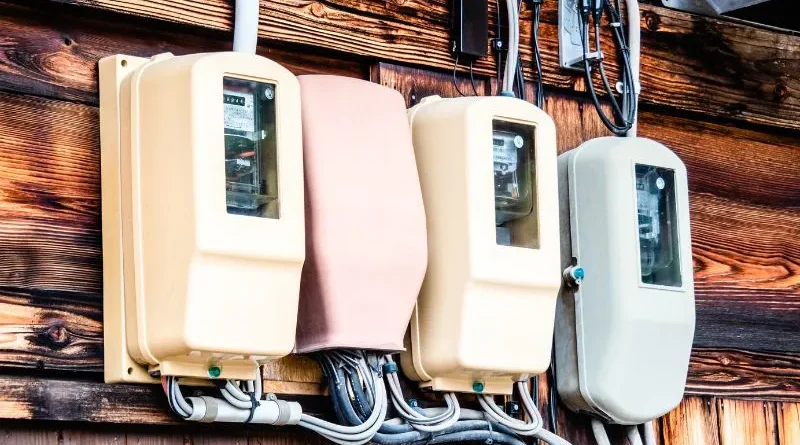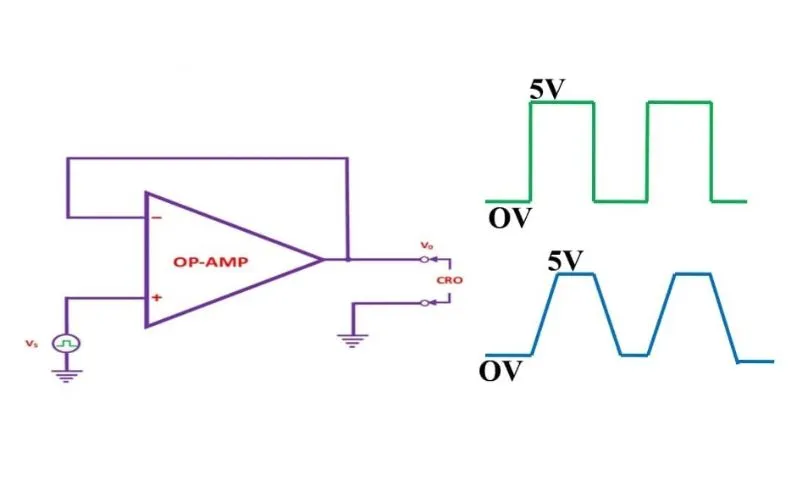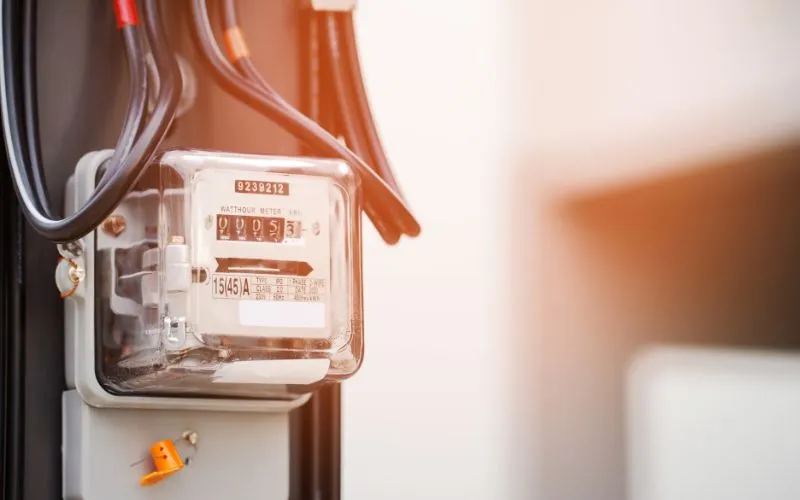
In electronics, operational amplifiers (operational amplifiers) are fundamental and essential components in a variety of applications, from audio amplifiers to signal processing circuits. A critical parameter that engineers often face when dealing with operational amplifiers is “slew rate”. Understanding slew rate is critical to designing circuits with optimal performance and reliability.
What is slew rate in op amp?

Slew rate refers to the rate of change of the output voltage over time. In simpler terms, it measures how quickly an op amp can respond to changes in the input signal. It is normally given in volts per microsecond (V/µs). Understanding slew rate is particularly important in applications where the input signal undergoes rapid changes or transitions.
The importance of the rate of increase
Rate of change is a critical parameter for several reasons:
- Signal fidelity : In applications where the input signal contains high frequency components, such as in audio amplifiers or data acquisition systems, maintaining signal fidelity is critical. A high slew rate ensures that the op amp can accurately reproduce rapid signal changes without distortion.
- Transient Behavior : Operational amplifiers with higher slew rate have better transient response characteristics. This means they can quickly achieve a stable output voltage after a change in the input signal, minimizing overshoot and undershoot.
- Frequency Response : The slew rate directly affects the frequency response of the operational amplifier. Higher slew rates allow operational amplifiers to effectively process high-frequency signals, expanding their usefulness into a wider range of applications.
Factors affecting the rate of increase

Slew rate, a critical parameter in operational amplifier performance, is influenced by several factors, each of which plays an important role in determining the amplifier's ability to respond to rapid changes in input signals. Engineers must understand these factors to design circuits with optimal performance characteristics.
Internal circuits
The internal circuit design of an operational amplifier has a significant impact on its slew rate. Operational amplifiers with advanced architectures, such as those with high-speed transistors and sophisticated compensation techniques, tend to have higher slew rates. These operational amplifiers are designed to minimize internal capacitance and propagation delay, allowing for faster response times to input signal fluctuations.
Additionally, the topology of the input and output stages and the compensation scheme used can affect the amplifier's ability to ramp up quickly. For example, operational amplifiers with current feedback or cascade configurations can provide better slew rate compared to traditional voltage feedback designs.
supply voltage
The supply voltage directly affects the slew rate of an operational amplifier. As the supply voltage increases, the margin available for signal fluctuation increases, allowing for faster output transitions. This is because a higher voltage allows the op amp output stage to conduct larger currents, allowing for faster charging and discharging of capacitive loads.
Engineers generally select operational amplifiers with sufficient supply voltage to ensure sufficient slew rate for their application needs. However, it is important to find a balance, as supply voltages that are too high can increase energy consumption and affect heat generation.
battery capacity
The capacitive load connected to the output of the op amp can significantly affect its slew rate. Capacitive loads result in additional charging and discharging currents that the operational amplifier output stage must provide. As capacity increases, the time required for the output voltage to rise increases, resulting in a slower rate of change.
Engineers must carefully consider capacitive load conditions in their circuit designs to ensure that the operational amplifier can meet the required slew rate specifications. Techniques such as using buffer amplifiers or minimizing load capacitive through appropriate circuitry and component selection can help mitigate the effects of load capacitance on slew rate.
Temperature and process fluctuations
Temperature and process variations can affect the slew rate of an operational amplifier, particularly in integrated circuit implementations. Fluctuations in operating temperature can affect the speed of transistor devices and lead to changes in device characteristics, resulting in fluctuations in the rate of change.
Likewise, process variations during semiconductor manufacturing can result in differences in device parameters, such as transistor gain and capacitance, which affect the rate of change. To compensate for these effects, manufacturers often provide slew rate specifications over specific temperature ranges and process variations.
Calculating the rate of change
The slew rate of an operational amplifier can be calculated using the following formula:
Growth rate = Δ T Δ v out
Where:
- the change in output voltage.
- ΔT is the corresponding change over time.
Conclusion
In summary, the slew rate in operational amplifiers is a critical parameter that directly affects the amplifier's ability to respond to rapid changes in input signals. By examining factors that affect slew rate, including internal circuitry, supply voltage, load capacitance, and environmental fluctuations, engineers gain valuable information about how to optimize op amp performance for their applications. By considering these factors during the design phase and applying appropriate mitigation strategies when necessary, engineers can ensure that the operational amplifier meets desired slew rate specifications, enabling reliable and efficient operation in various electronic systems.
Common questions
What are the effects of low slew rate on op amps?
A low slew rate can result in signal distortion and poor response to rapid changes in input signals. This can lead to signal clipping, where the op amp cannot accurately reproduce the input waveform, resulting in distorted output signals. A low slew rate can significantly degrade performance and affect system functionality in applications that require high-frequency signal processing or accurate transient response.
What influence does slew rate have on amplifier stability?
The slew rate is closely linked to the stability of the amplifier, particularly in feedback systems. An insufficient slew rate can lead to jitter-induced distortions and instabilities, resulting in flickering and ringing in the output signal. This instability can affect system performance and, in extreme cases, even lead to circuit failure. Proper consideration of slew rate is critical to maintaining stability and reliable operation of amplifier circuits.
Can slew rate be improved in operational amplifier circuits?
Yes, there are several techniques that can be used to improve the slew rate of operational amplifier circuits. One approach is to select operational amplifiers with greater bandwidth and faster response times. Optimizing the op amp supply voltage and minimizing capacitive loading can help improve slew rate. Furthermore, careful attention to circuit layout and component selection can reduce parasitic capacitance and propagation delay, thereby improving slew rate and overall circuit performance.

